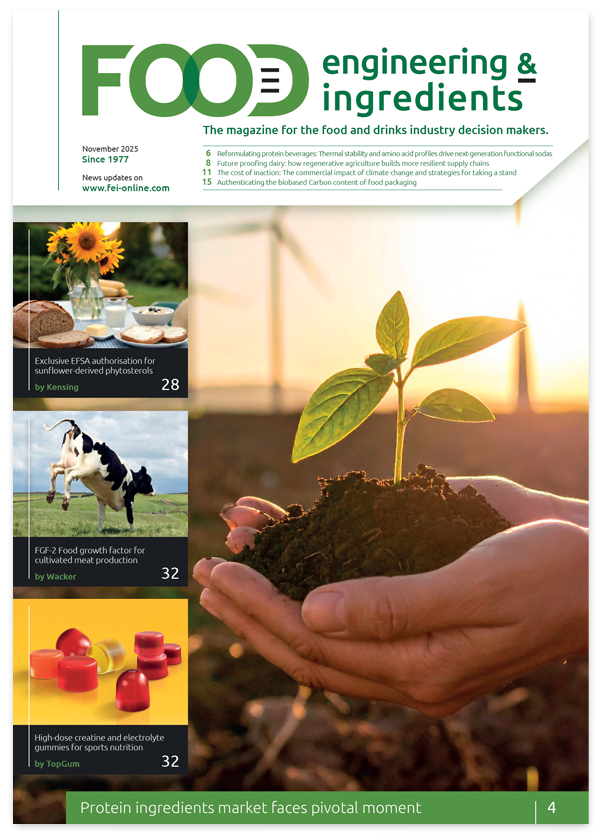Gene-edited fungi boost mycoprotein nutrition while slashing environmental footprint
Researchers have used CRISPR/Cas9 technology to engineer Fusarium venenatum that produces myco-protein with superior nutritional properties and dramatically improved sustainability metrics. The break-through demonstrates how precise metabolic modifications can simul-taneously enhance protein quality and reduce resource consumption in alternative protein production, validated at industrial fermentation scale.
A Scientists at Jiangnan University have achieved dual enhancement of mycoprotein production through targeted gene knockout technology, creating a strain that delivers substantially improved nutritional value whilst reducing environmental impacts across multiple categories.
The research team employed CRISPR/Cas9-mediated scarless gene knockout to simultaneously delete chitin synthase and pyruvate decarboxylase genes in F. venenatum. The resulting engineered strain, designated FCPD, exhibited a 32.9% increase in essential amino acid index (EAAI) compared to the wild-type strain, alongside marked improvements
in production efficiency.
Enhanced protein conversion and reduced substrate consumption
Industrial-scale fermentation trials conducted at 5000-litre capacity revealed striking performance improvements. The FCPD strain achieved an 88.4% increase in mycoprotein production rate whilst consuming 44.3% less glucose substrate per kilogram of product. The glucose-to-protein conversion rate increased 2.24-fold compared to wild-type production.
“By targeting and regulating the metabolic flux and chitin synthesis of Fusarium venenatum through CRISPR/Cas9, mycoprotein with high protein content, high essential amino acid index, and high substrate conversion rate was created,” the authors state in their research paper. The engineered strain demonstrated a 29% reduction in chitin content before heat treatment, potentially improving digestibility. In vitro simulated gastrointestinal digestion revealed enhanced essential amino acid scores, with protein digestibility reaching 52.65% after heat treatment.
Integrated transcriptomic and metabolomic analysis identified 1076 differen-tially expressed genes and 478 differentially expressed metabolites. These changes were significantly enriched in pathways including carbon metabolism, amino acid biosynthesis, and the TCA cycle. The glycolysis/gluconeogenesis pathway showed significant downregulation in FCPD, potentially explaining the reduced glucose consumption rate.
Comprehensive environmental assessment across global scenarios
The research team conducted cradle-to-gate life cycle assessment (LCA) across eight production scenarios representing different national energy infrastructures: China, Finland, USA, Poland, the Netherlands, UK, and a low-carbon China model incorporating renewable and nuclear energy sources.
Results demonstrated that FCPD-mycoprotein production could reduce global warming potential by 4–61.3% compared to wild-type production, depending on the production scenario. Glucose inputs accounted for 48.48–67.32% of greenhouse gas emissions, with electricity contributing 5.67–29.47% depending on regional energy mix. Land use impacts showed particularly dramatic improvements, with glucose inputs dominating this category at 97.9–99.38%. The 44% reduction in glucose consumption per kilogram of product translated directly into substantial reductions across most environmental impact categories.
Comparative analysis against alternative proteins
When benchmarked against other protein sources using 1 kg meat-like product as the functional unit, FCPD-mycoprotein demonstrated superior environmental performance compared to cell-cultured meat and chicken meat across multiple categories including global warming potential, land use, stratospheric ozone depletion, terrestrial acidification, and freshwater eutrophication.
Pea protein sausage maintained the lowest environmental impact across all categories, consistent with plant-based protein advantages. However, cell-cultured meat showed the highest impacts, particularly for global warming potential, terrestrial ecotoxicity, and water scarcity. “The production process of gene-edited MP is more environmentally friendly than chicken meat and cell-cultured meat,” the authors conclude. “Nutritional value and sustainability of gene-edited MP food could be enhanced through CRISPR.”
Sensitivity analysis revealed that glucose inputs dominated environmental impacts. A 20% increase in glucose consumption would result in 9.69–19.84% increases in environmental impact across categories, whilst comparable increases in electricity, steam, or water inputs produced substantially smaller effects.
Industrial validation and regulatory considerations
Mycotoxin analysis of heat-treated products confirmed the absence of deoxynivalenol, zearalenone, and patulin in both wild-type and FCPD mycoprotein, addressing food safety concerns. The research achieved Technology Readiness Level 5, demonstrating validation in relevant industrial environments.
The authors note that CRISPR/Cas9-based genome editing does not introduce foreign DNA, potentially facilitating regulatory approval in jurisdictions like the USA where such modifications are considered distinct from traditional genetic modification. This distinction may prove crucial for commercial deployment and consumer acceptance.
The established LCA model demonstrates applicability across different production scenarios, though the authors acknowledge limitations regarding glucose production data specificity and the need for region-specific characterisation of agricultural inputs.
Reference
Wu, X., Wang, M., Luo, S., et. al. (2025). Dual enhancement of mycoprotein nutritionand sustainability via CRISPR-mediated metabolic engineering of Fusarium venenatum. Trends in Biotechnology. https://doi.org/10.1016/j.tibtech.2025.09.016




